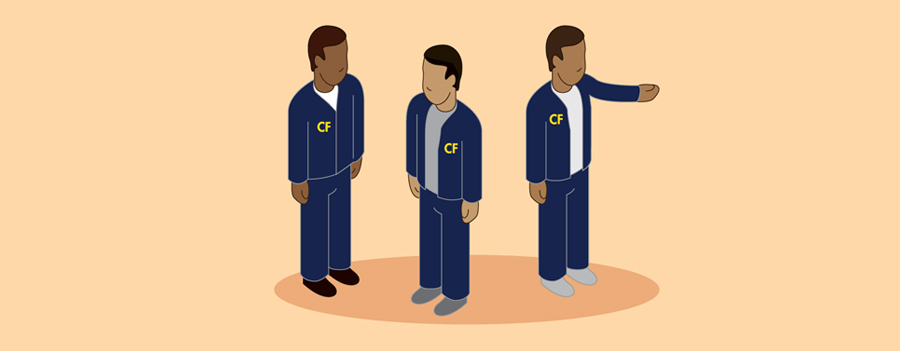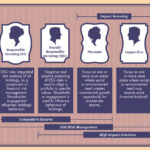The problem of gangsterism is a deeply entrenched one in the cluster of Cape Town suburbs known as the Cape Flats. Here, many communities are held hostage by street violence that claims countless innocent lives. It’s become a big part of everyday life. But the CeaseFire project – a clever social innovation that uses the public health approach to violence – is working to treat this social ill from within.
The problem of crime and violence
It’s nothing new really. According to the World Health Organisation (WHO), “violence has always been part of the human experience”. Today, it’s responsible for more than 1.5 million deaths a year worldwide, and many more non-fatal and chronic injuries. It’s also among the leading causes of death for people aged 15 to 44. But, despite this ubiquitousness, attempts to solve the violence problem have mainly followed two as-yet unsuccessful paths.
The first is traditional law enforcement, which promotes bringing perpetrators to justice and sentencing them to years behind bars – or else bringing in the army to address gang violence, as seen in Cape Town. This is often an ineffective and short-term solution. Why? Because prisons are not good at rehabilitating prisoners and correcting their behaviour. Many of them leave prison more violent than when they were interned and, due to a lack of economic opportunities on the outside, many also end up returning to prison shortly after release.
The second, and more medium- to long-term approach, is to try and address socioeconomic issues by seeing them as drivers of crime in low-income communities. These issues include bad structural design, poor or no education, and little economic opportunity for residents in the area.
But, neither approach can succeed alone. Many experts in the crime-prevention field say that balancing the two and working within the affected community holds the most promise for improving safety. In fact, many public health practitioners say violence should be seen as a health issue – according to the WHO, “it negatively affects the health of people… both the obvious physical injuries of the victims as well as those who witness violence and consequently suffer from mental trauma… and [adopt] violent behaviour themselves.” This new way of thinking is inspiring a number of new social innovations around community safety and violence prevention. Like this one…
The Hanover Park CeaseFire Project – how it works
It’s being implemented by the Western Cape Department of Community Safety and the City of Cape Town’s Violence Prevention through Urban Upgrading Project. It operates out of the First Community Resource Centre, which houses counselling services, job-placement services, a drug restoration centre and a safe house. Founder of the Centre, Pastor Craven Engel, is a CeaseFire lynchpin and the project’s CEO.
Hanover Park CeaseFire was officially launched in 2013 as a three-year pilot – the first of its kind in Africa. But preparations started back in 2011, when a group from Chicago (where the concept originated) came to Cape Town to train the team. A first step was to conduct a baseline study to establish gang-related crime levels, perceptions of violence and community needs at the time. This data would be used to measure the project’s effectiveness in reducing violence over its term.
CeaseFire is a like a prescription for safety and community health. It’s a violence-prevention methodology developed by epidemiologist Gary Slutkin, who noticed that the behaviour and spread of violence is very similar to that of epidemics like AIDS, TB and Cholera. “Violence is a learned behaviour that can be cured,” he said. He also noted that its spread can be stopped using the same strategies for containing infectious disease.
This innovative approach was first proven by CeaseFire Chicago, an NGO founded by Slutkin, now known as Cure Violence. It has since been adopted in various US states and in several gang-plagued countries, inclucing Kenya, Iraq, South Africa and countries in the Caribbean.
In treating the violence epidemic, the methodology draws on certain “disease-control strategies”.
1 Detect and interrupt conflicts
As with disease, prevention is better than cure. So conflicts between rival gangs that have the potential to turn violent need to be identified and interrupted before they escalate. The idea is to mediate ongoing conflicts, prevent gang retaliations and keep conflicts “cool”. This is done by trained Violence Interrupters and Outreach Workers who walk the streets of Hanover Park daily to pick up “hot spots” and prevent them from igniting.
2 Identify and treat high-risk individuals
Like a disease, violence has to be transferred from one carrier to another. Therefore, “high-risk individuals” are the gang members or “transporters” of crimes. CeaseFire uses Violence Interrupters (themselves former transporters) to identify and “quarantine” carriers before they contaminate others. In addition the project works with at-risk individuals – usually youngsters who are possible gang recruits – to divert them from violent activity. The high-risk and at-risk individuals become clients (or “patients”) of the Violence Interrupters and of CeaseFire’s Outreach Workers, who provide drug treatment, behaviour modification, skill development, job-readiness assistance and employment access.
3 Change social norms
The aim is to change the community perception by sensitising them to the fact that violence is not normal. For many Hanover Park residents fear has become a part of everyday life. People are used to staying indoors. Children seldom play outside for fear of being hit by stray bullets. But the CeaseFire team is working to spread positive messages and keep shootings to a minimum. The aim? To create a new norm where people can walk the streets without fear.
Why it works
In visiting the Hanover Park site and meeting the team, I was struck by the following factors, which seem to be drivers of CeaseFire’s success…
The Violence Interrupters
According to Cure Violence, “the key success factor of the CeaseFire programme is the deployment of the Violence Interrupters”.
They are former gang members of the highest ranks who have decided to turn their backs on gang activity and contribute to the community. Having spent years in the trenches, both outside and inside prison, they are highly specialised, with a deep knowledge of the area and of local gang culture with its discipline, street sense and credibility. That’s what makes Violence Interrupters qualified to do what they do.
Working alongside the Violence Interrupters are the Outreach Workers who have administrative skills for running workshops, mobilising the community and engaging high-risk and at-risk individuals. Some of them will also double as Violence Interrupters when they are the only ones with influence in a particular gang.
Hearing their stories, and seeing them walking through the neighbourhood in their branded black and yellow CeaseFire jackets, I realised that being a Violence Interrupter comes with many physical and emotional demands. It often involves being caught in gang crossfire or risking your life to mediate intense conflicts. At times it deals blows like the death of a high-risk individual you’ve been working with to reform.
The Hanover Park team is made up of 12 Violence Interrupters and Outreach Workers – 11 men and one woman. Yes, it is a positive life choice. But in some ways, being a Violence Interrupter is as challenging as being in a gang…
The “brand” strategy
In the social impact space, it’s generally accepted that the most successful projects are those that get community buy-in. This was no less true in Hanover Park.
At the outset, there was some community resentment – people didn’t see the benefits and didn’t understand why gangsters were being “rewarded” when law-abiding citizens were not. In order to achieve its goals, the project had to win the trust of the community members, and gang bosses simultaneously. This was done by treating CeaseFire like a brand.
“The first step was to make the project community-owned,” says Kim Hawke who was responsible for CeaseFire’s branding strategy. “This is done by working with the people who are most intimately involved with and targeted by the project. By understanding their needs and aspirations, you can translate them into a winning brand and communication strategy.”
It makes sense that Hawke’s brand consultancy is called Within People. Their aim is to lead change through purposeful brands, and the approach is based on shaping brands from within by co-creating strategies to support change. Insights and ideas are drawn from the people involved – “a key strength of Hanover Park CeaseFire is that it’s a product of people who have lived in the community their whole lives. The use of Violence Interrupters from within the community sends the signal that it is not outside expertise that’s needed to make change happen in Hanover Park,” she explains.
The four-fold strategy that emerged from within and helped make CeaseFire a community-owned brand is as follows:
1 Have the right champion. In this case it’s Pastor Craven Engel, CeaseFire CEO and founder of the First Community Resource Centre. Why is he the champion for the job? Because he too comes from within: “He has a presence locally, can mobilise resources, and understands the community completely,” says Hawke.
2 Involve the community in creating the brand. Through a community survey, residents were engaged and made aware of what the Violence Interrupters look like, and what they do. Each member of the CeaseFire team was also consulted to establish the potential challenges and opportunities.
3 Clear and clever positioning. Because the project needed to be accepted by gangs in the area, it had to position itself as anti-violence, not anti-gang. Equally important was the management of community perceptions of Violence Interrupters – as former gang members now indirectly working for the City of Cape Town, they had to be positioned as credible individuals uniquely qualified to serve the community.
4 Communicate the benefits. “The community can be your worst enemy if you can’t convince them it’s right for [them],” says Pastor Craven. It’s true – residents need to see and feel the benefits if they’re going to give a project their support. That’s why the project now shares safety information and tips with the community – safe places to walk, number of days of no shooting and warnings of potential conflicts getting “hot”.
The gang strategy
For very good reasons, CeaseFire is designed to operate like a gang – minus the violence and illegal enterprises, of course.
“Leaving gang life requires a lot of will and courage,” says Craven. “You lose all power… sometimes you also have a criminal record, a drug problem, no job and no respect from anyone.”
As a result, the programme gives gang-like emotional benefits to its members – status in the community, respect from peers and gang members, an identity, a purpose and also a sense of belonging.
“We come from different gangs and were once enemies,” one of the Outreach Workers said in an interview. “We used to shoot at one another, but now we can sit around a table and share tea over the goal of reducing violence and making a safer Hanover Park for its residents and visitors.”
Assessing the impact
According to the Western Cape Government, CeaseFire Hanover Park saw a 50% reduction in gang-related murders and attempted murders in its first six months. It’s also aiming for a further 50% reduction this year.
These are impressive results. But the data collection is impressive too. The programme actively collects and reports monthly safety measures, such as violence ratings and number of days without fatal shooting for each “beat” in Hanover Park. As of the 27 June 2014 Ceasfire Safety Update, 11 out of 13 beats had exceeded 100 days of no fatal shootings.
The impact goal of the programme is to one day reach 365 days of zero violence in Hanover Park. Considering the area’s notoriety, this may sound a little unrealistic. But given how the project has been steadily reducing local shootings over the last 18 months, this real-life ceasefire could now conceivably happen. The disease of violence is being treated, quite possibly to be cured.


